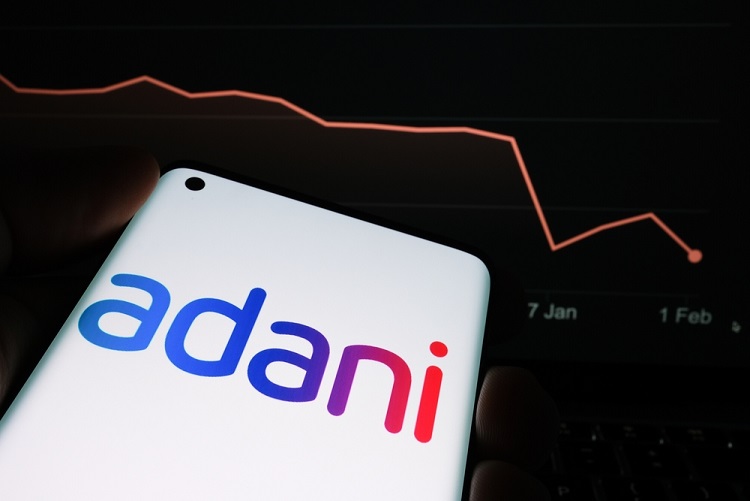Adani Enterprises lost 18.5 percent of its market valuation on January 27 when the Hindenburg report hit the markets. It recovered 7.7 percent over the next two trading days but then crashed 28.2 percent on February 1 when Credit Suisse marked down its paper to zero. It fell another 26.7 percent on February 2 before stabilising. The stock lost 59.8 percent (as on 23 February 2023) since the release of the offending report.
What is important is that Adani Enterprises effectively failed to raise the Rs.200 billion it hoped to raise from the FPO. This failure can have implications on Adani’s ability to finance its projects.
According to CMIE’s CapEx database, the Adani group is currently implementing or has announced intentions to implement 191 large projects in India involving investments of over Rs.7 trillion. It has also completed 123 projects worth another Rs.1 trillion. To place these numbers in perspective, the total investments on hand by the Adani group are equal to all projects in the CapEx database that are usually completed in a year. The ongoing Adani projects would take several years to complete but the comparison indicates the substantial impact that the group’s projects can have on the investments cycle building up in India.
The Indian investment pipeline is very large at about Rs.240 trillion in nearly 28,000 projects. The Adani-group projects account for a miniscule three percent of this potential investment. But they have the largest share in India’s investments pipeline compared to any other large private business group in India.
The importance of the Adani group’s investments is that they are in important infrastructure industries. The group is investing Rs.2 trillion in 13 port projects. Its investments into the electricity sector are larger as it is investing Rs.1.8 trillion in 33 renewable energy projects, Rs.0.7 trillion in 12 conventional energy projects and Rs.0.13 trillion in electricity transmission projects. It is investing nearly Rs.0.2 trillion in cement capacities thanks to the acquisition of established cement giants in India Ambuja Cements and ACC. The group has also acquired large assets in recent years.
These investments are large and in this respect Adani’s difficulties in raising funds or an effective increase in the cost of funds the group may face can impact the implementation of these projects.
The damaging Hindenburg report has raised several questions regarding governance problems, sources of funding, related party transactions, etc. But it has not raised any significant questions on the financial statements of the companies in the group. They have commented that the auditors are an unknown firm, and the partners of the firm are rather young and apparently too inexperienced to deal with a group as complex as Adani.
We aggregate the financial statements of over a hundred Adani group companies available in the Prowess database and compare these with similarly aggregated financial statements of other large business groups of India. We find that the Adani group is large and its financials are somewhat, but not substantially, inferior than of the other large groups. The balance sheet itself may not be a deterrent in raising funds but, it does not show a healthy build of fixed assets. We find that in 2021-22, the 100 Adani group companies as a whole had a current ratio of 0.74. This is poor and compares badly with Jindals (1.1), Tatas (1) and Reliance (0.93). The Kumar Mangalam Birla group financials are hit by the Vodafone problems and therefore its current ratio was worse at 0.71.
Adani group companies have the highest debt-to-equity ratio among large business groups. Between 2017-18 and 2021-22 it has ranged from 1.5 to 1.1, although it has been declining steadily. Others have a gearing ratio that is mostly below one, averaging close to 0.7. The Adani group is therefore over-leveraged compared to other business groups.
Similarly, Adani’s interest cover is the lowest among the large business groups but it is comfortable at over 2 times its profits. The group, it appears from its financial statements, should be able to service its debts and should be able to raise fresh debt as well.
But the Adani group has a poor record on building fixed assets. This is a problem that is evident in the corporate sector as a whole. But the Adani group is much worse. This is surprising and a bit worrying. During the three years from 2019-20 through 2021-22, while the full set of non-finance companies in the Prowess database (a sample of about 24,000) grew by 11.3 percent, 2.3 percent and 2.2 percent, the Adani group of companies grew by -2.2 percent, -2.8 percent and 0.4 percent. This reflects poorly of a group that is at the forefront of acquiring and building assets in India.
This poor record of the Adani’s at building fixed assets does not quite befit the image of the largest investor into infrastructure in India. A caveat is in place. An aggregation of 100 group companies is not necessarily a complete of the group. Transfers to group companies which are not in the sample of 100 companies could change the above findings.
The Adani group faces challenges in the stratospheric valuations of its listed companies and allegations of the means by which they reached such levels. This has hurt the group’s credibility to raise funds through issuance of equity capital.
If lenders re-assess the worth of Adani stocks and find them to be really over-valued, then the group’s ability to raise funds through debt instruments gets constrained. If international financers get too uncomfortable with allegations of poor governance, they may be less enthusiastic to lend to potentially one of India’s fastest growing business houses.
The Adani group’s difficulties in raising funds could hurt the Rs.7 trillion worth of projects that are being implemented since these are capital intensive projects. Further, Adani’s difficulties in raising capital could also delay the long-awaited revival of the private investments cycle.
Click here to read more articles by the author
Author is MD and CEO of Centre for Monitoring Indian Economy Pvt. Ltd






